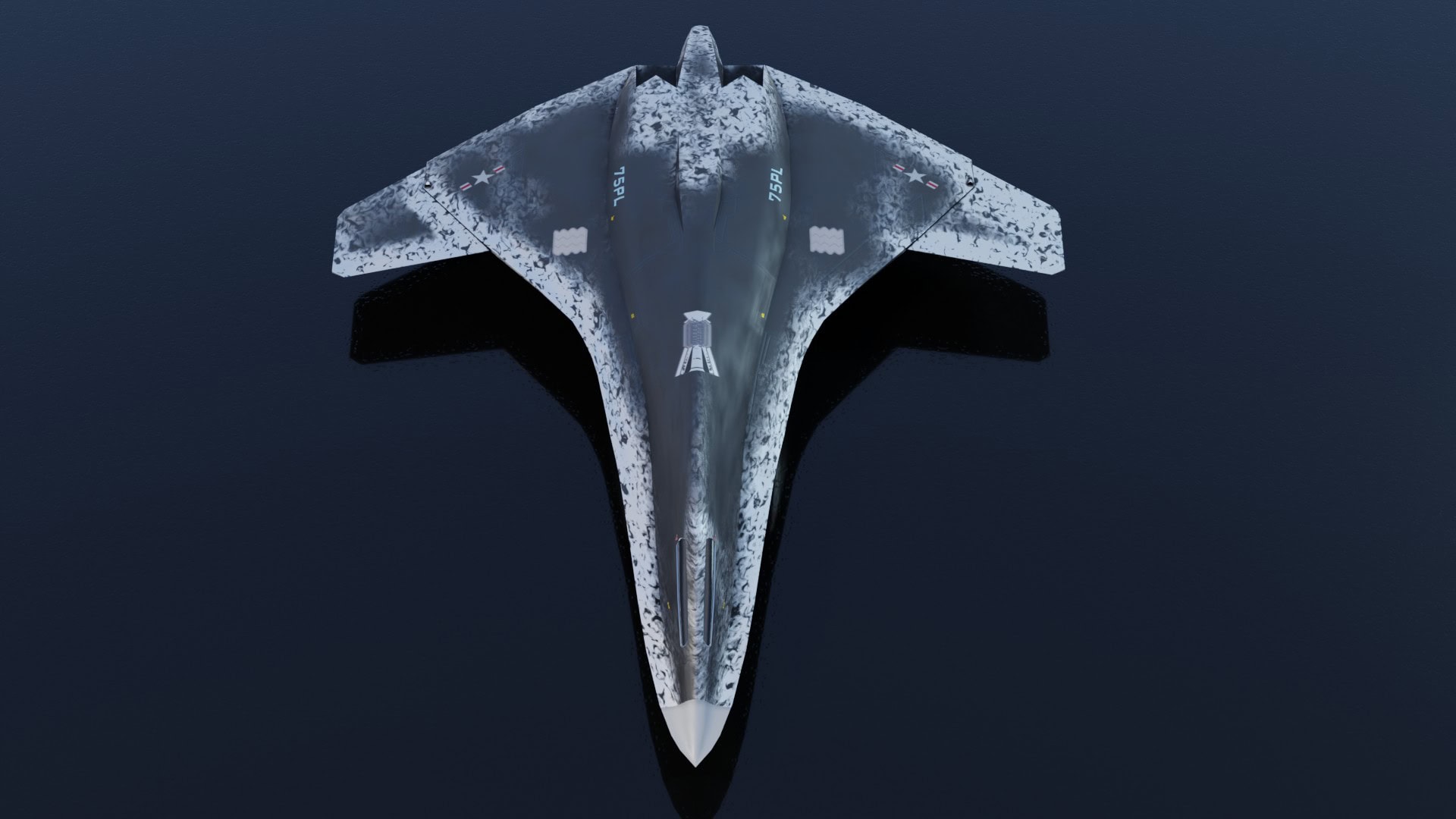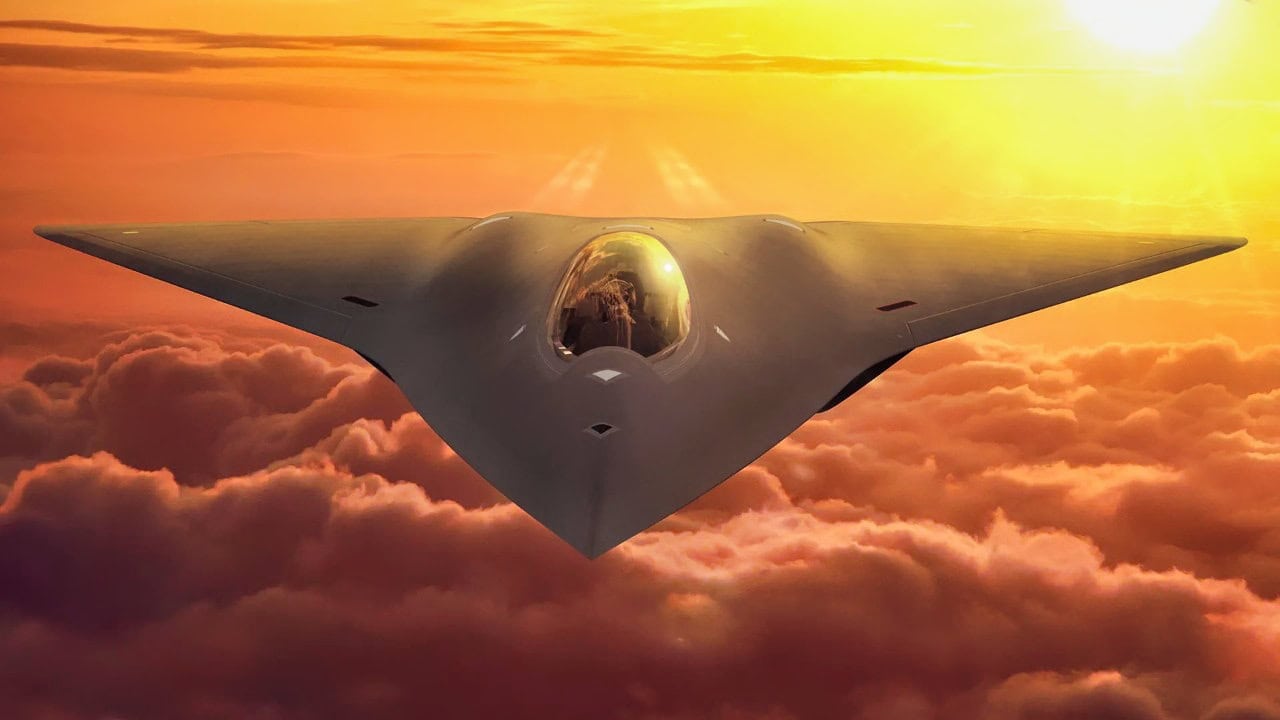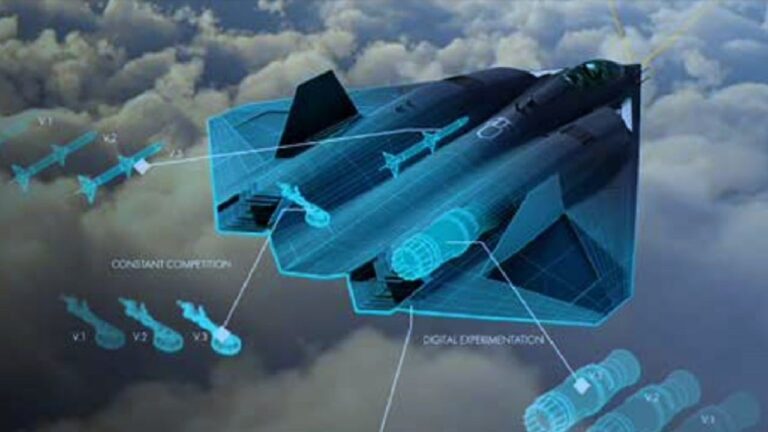Key points and summary: The Air Force’s sixth-generation NGAD stealth fighter can trace its origins to the 1999 X-44 MANTA concept.
-Developed by Lockheed Martin, the X-44 MANTA was conceived as a tailless, fully horizontal stealth jet based on the F-22, but was designed to operate without a vertical tail or fins. Ta.
-This innovative design combines broadband stealth and maneuverability, a breakthrough that is now at the heart of NGAD’s design.
Although canceled for budget reasons, MANTA laid the foundation for tailless stealth aircraft.
-Lessons learned from this ambitious program helped shape the NGAD demonstrator, which combines stealth and agility into one paradigm-shifting platform.
Did the X-44 MANTA lay the foundation for the Air Force’s NGAD fighter?
Early advances in the field of the current 6th generation Air Force NGAD stealth fighter can be traced back nearly 30 years.
If you take a closer look at the Lockheed Martin X-44 Multi-Axis Tailless Aircraft (MANTA) experimental aircraft, conceived in 1999, the answer may be yes.
X-44 Manta: “Tailless F-22?”
Based on key aspects of the F-22, the X-44 was designed as a “tailless”, fully horizontal stealth fighter that could change direction without the need for a tail, vertical stabilizer, or fins of any kind.
Sound familiar?
This ultra-stealth technology, incorporated into high-speed maneuverable stealth fighters, is a key conceptual basis for the emerging sixth-generation aircraft.
The U.S. Air Force’s currently flying sixth-generation NGAD demonstrator has not been shown publicly for security reasons, but early defense industry renderings show it matches early conceptual visions of the X-44 MANTA. A tailless, completely horizontal stealth aircraft was shown.
Of course, a fully horizontal bomber-like mixed-wing fuselage would be much stealthier than an airplane with a vertical structure, but without a vertical structure it would have a “thrust vector” and a method like the F-22. There is also the possibility of building an aircraft that can be operated by The 6th generation incorporates “huge” advances.
Was the conceptual work underlying the current 6th generation aircraft contemplated or anticipated by the X-44 MANTA vision and conceptual work in 1999?
Simply put, the X-44 MANTA was conceived as an aircraft that could pitch, yaw, and roll completely without any vertical structure or tailpipe.
Although the project was canceled for budget reasons, its conceptual existence had a long-term impact.
The impact of this vision suggests that the X-44 MANTA is something that in hindsight should never have been canceled.

NGAD fighter mockup. Image credit: Creative Commons.
Perhaps the U.S. Air Force could have had 6th generation stealth fighters decades before they arrived?
New aerodynamic breakthrough
The tail and fins are known to be important in directing the airflow around the airplane, which is necessary for making sharp turns and maneuvering at high speeds, allowing for changes in direction without the use of vertical structures or fin stabilizers. The ability to do so represents a paradigm-changing aerodynamic advance.
In the eyes of an observer, the most important advantage of a perfectly horizontal aircraft is stealth.
Vertical structures are more easily detected by air defense and enemy radars, as they provide objects and sharp angles on which electromagnetic “pings” can be bounced off and provide return rendering.
Specifically, if large amounts of electromagnetic signals travel at the speed of light and reflect off various angles, structures, and aircraft salient parts, an enemy’s radar could potentially obtain a clear image or “rendering” of the object. much higher.
Designs like the B-2, with a completely horizontal blend of wings and fuselage, are known as the stealthiest aircraft because they appear like a “bird” to enemy radar.

U.S. Air Force Col. Samuel “RaZZ” Larson, commander of the F-22 Raptor Demonstration Team, conducts aerial exercises in preparation for the ongoing air show season at Joint Base Langley-Eustis, Virginia, July 9, 2024. July 9, 2024. It emphasizes the importance of air power in modern warfare and helps strengthen the deterrent capabilities of advanced fighter jets like the F-22 Raptor. (U.S. Air Force photo by Senior Airman Michaela Smith)
There are no sharp structures for electromagnetic pings to bounce off of, but a “broadband” stealth platform cannot maneuver like the F-22. The B-2 relies on altitude, speed, and the best stealth configuration available to evade air defenses.
However, in a vertical configuration, the F-22 may appear less stealthy than the B-2. This means that stealth configurations must be supplemented with speed and maneuverability to avoid target acquisition by enemy ground radars.
broadband stealth
Broadband stealth, like the one built into the B-2 and B-21, is designed to evade low-frequency “surveillance” radars and high-frequency “engagement” radars.
The idea is to carry out top-secret missions without the enemy knowing about the aircraft’s existence.
For example, an F-22 or F-35 may evade “engagement radar,” but it may be picked up by long-range, low-frequency “surveillance” radar that can tell when something is “out there.” there is.
Surveillance radar may spot a “threat” somewhere in a large area, but it cannot attack, lock on to, or completely “attack” a target. This means the F-22 can use its speed, maneuverability, and stealth to destroy enemy air defenses without being targeted or attacked.

NGAD Fighter via Lockheed Martin.
Actual “hitting” a target requires narrowly configured, high-speed, high-frequency radar detection, whereas low-frequency surveillance radar may cover the area but not establish target lock for the aircraft. there is.
Stealth and Maneuver: NGAD meets X-44 Manta
What about combining the stealth and maneuverability characteristics of broadband into one platform?
The idea is to create the stealthiest configuration possible while “maintaining” maneuvering, turning, and attack speed capabilities comparable to the F-22.
This is the basis of the 6th generation of NGAD and appears to date back to Lockheed’s X-44 MANTA in 1999.
About the author: Chris Osborne
Chris Osborn is military technology editor at 19FortyFive and president of Warrior Maven – Center for Military Modernization. Osborne previously worked at the Department of Defense as a senior specialist in acquisition, logistics and technology in the Office of the Assistant Secretary of the Army. Osborne has also worked as an anchor and on-air military expert on national television networks. He has appeared as a guest military expert on Fox News, MSNBC, the Military Channel, and the History Channel. He also holds a master’s degree in comparative literature from Columbia University.


